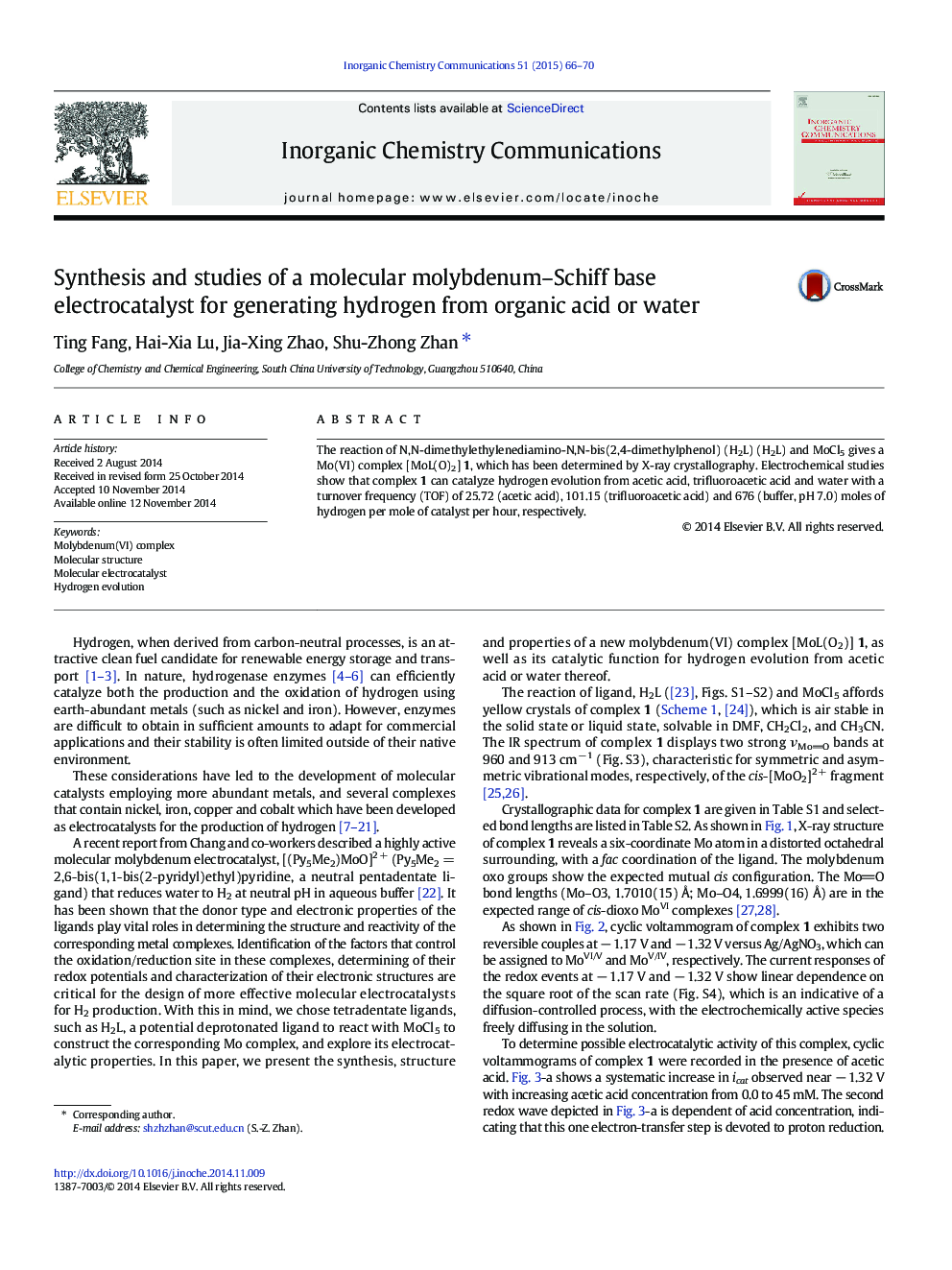| Article ID | Journal | Published Year | Pages | File Type |
|---|---|---|---|---|
| 1303520 | Inorganic Chemistry Communications | 2015 | 5 Pages |
•The reaction of H2L and MoCl5 gives a new Mo(VI) complex, [MoL(O)2] 1 .•Structure of 1 is determined by single crystal X-ray diffraction analysis.•1 can catalyze hydrogen evolution from organic acid such as acetic acid and trifluoroacetic acid and water.
The reaction of N,N-dimethylethylenediamino-N,N-bis(2,4-dimethylphenol) (H2L) (H2L) and MoCl5 gives a Mo(VI) complex [MoL(O)2] 1, which has been determined by X-ray crystallography. Electrochemical studies show that complex 1 can catalyze hydrogen evolution from acetic acid, trifluoroacetic acid and water with a turnover frequency (TOF) of 25.72 (acetic acid), 101.15 (trifluoroacetic acid) and 676 (buffer, pH 7.0) moles of hydrogen per mole of catalyst per hour, respectively.
Graphical abstractThe reaction of N,N-dimethylethylenediamino-N,N-bis(2,4-dimethylphenol)(H2L) and MoCl5 gives a Mo(VI) complex [MoL(O)2] 1, a new molecular electrocatalyst, which has been determined by X-ray crystallography. 1 can catalyze hydrogen evolution from acetic acid, trifluoroacetic acid and water with a turnover frequency (TOF) of 25.72 (acetic acid), 101.15 (trifluoroacetic acid) and 676 (buffer, pH 7.0) moles of hydrogen per mole of catalyst per hour, respectively.Figure optionsDownload full-size imageDownload as PowerPoint slide
